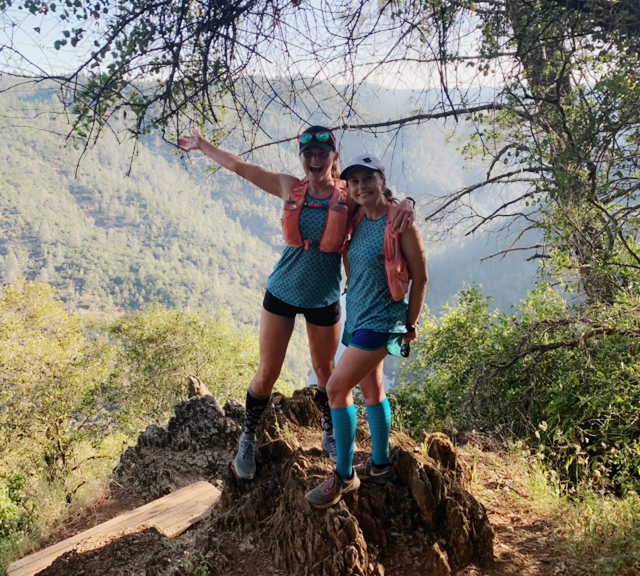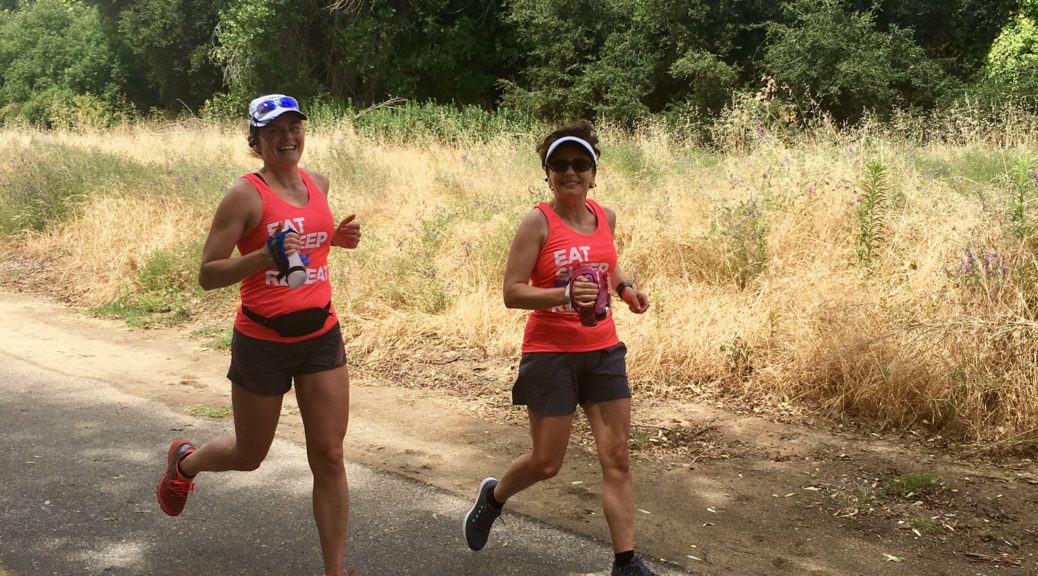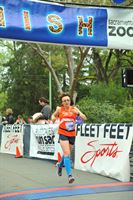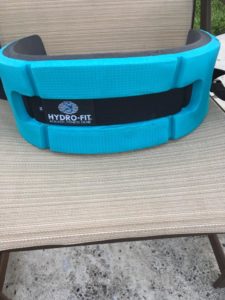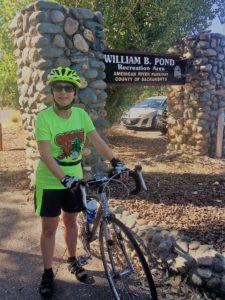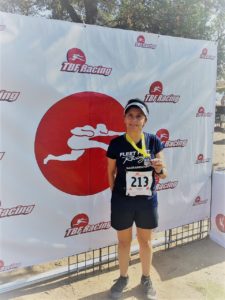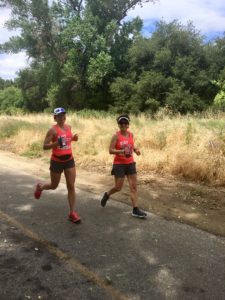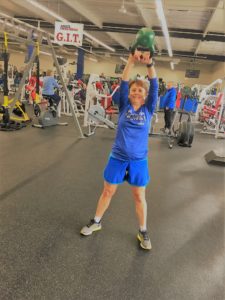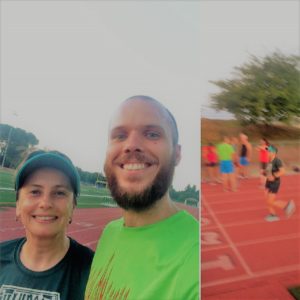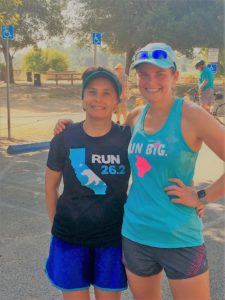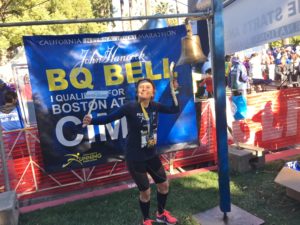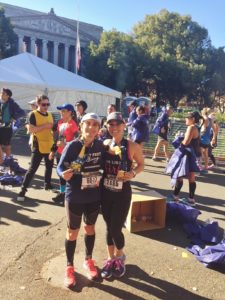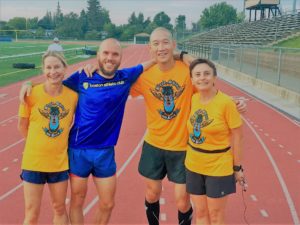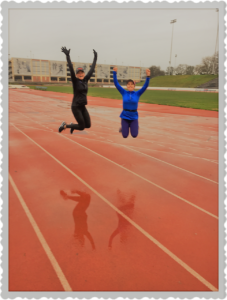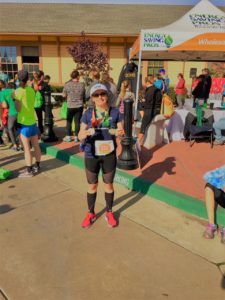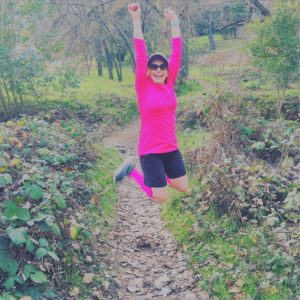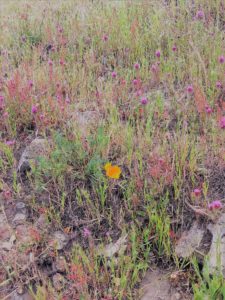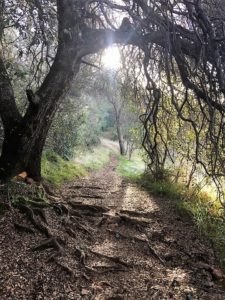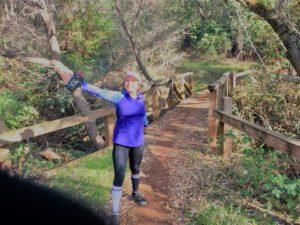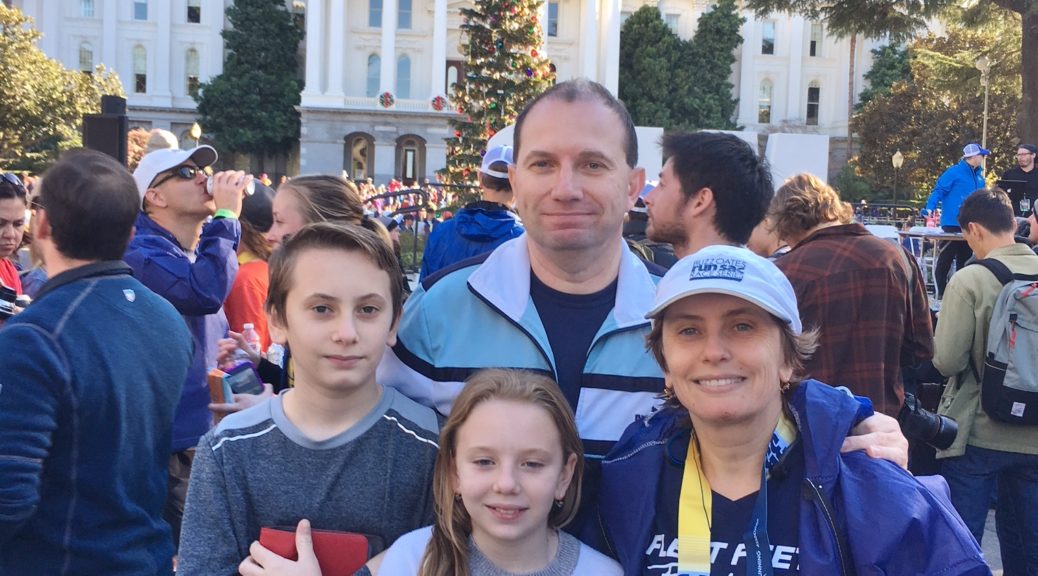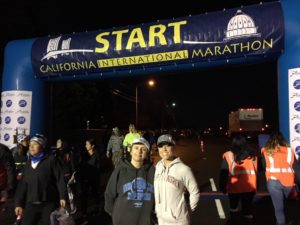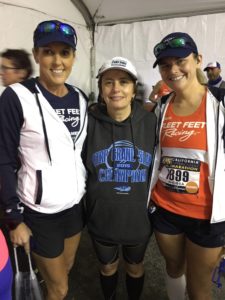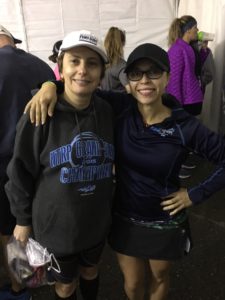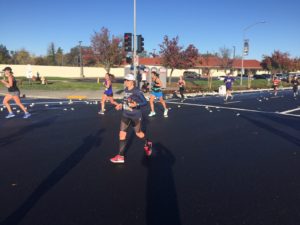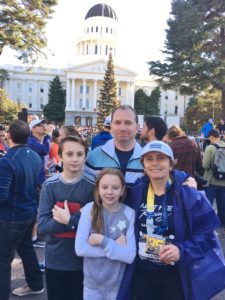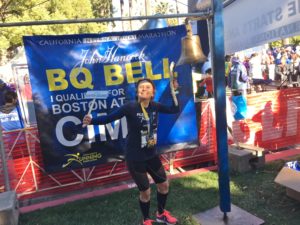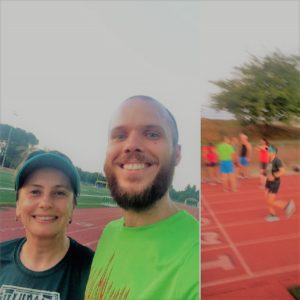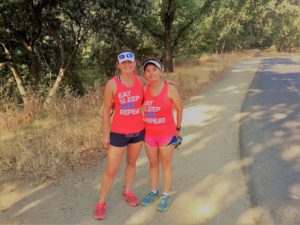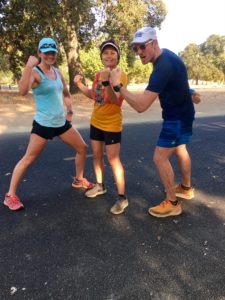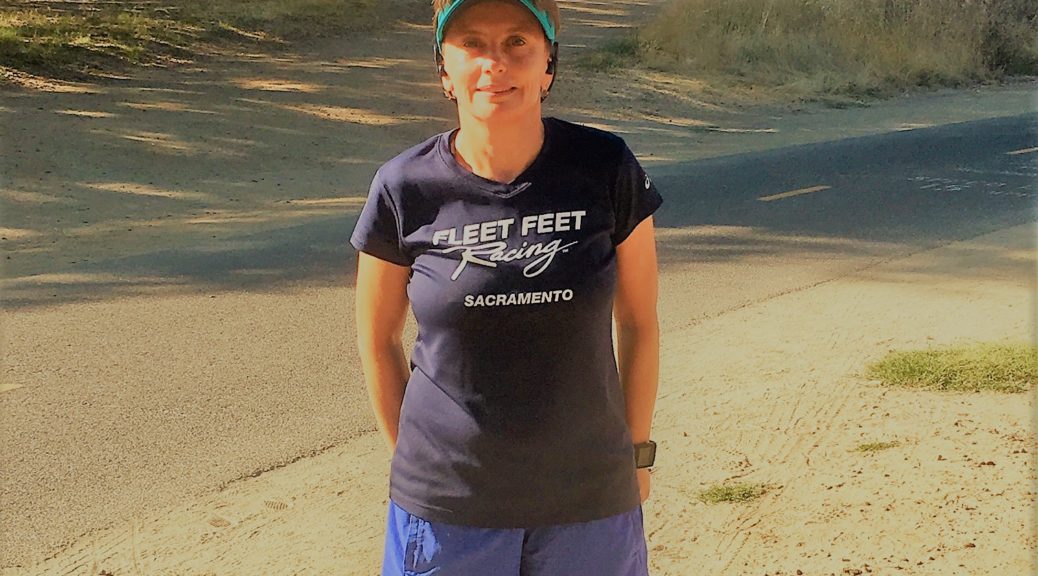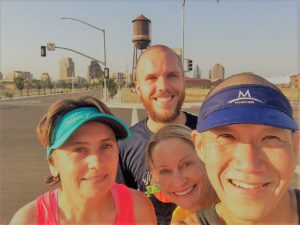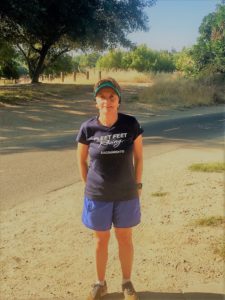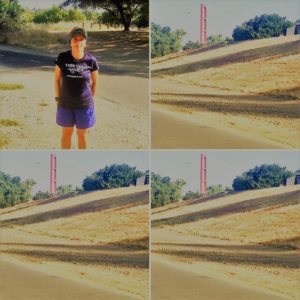After I ran California International Marathon, my first marathon, in 2015, I started playing with my speed doing all kind of creative workouts. I lowered my 9-minute pace to low 7s and I PRed in three 5K races that I ran in three months with two 5K back to back races. I am still working to break my 21:56 minute PR from Run to Feed the Hungry that I ran in 2016 in preparation for my second CIM marathon.
I dedicate this blog to my awesome trail runner friend Jeremy Payne, who recently asked on FB how to get faster on his own before hiring a coach. I highly recommend doing two speed workouts a week, but starting with one depending on your goals can work, too. For advanced runners looking to run faster, short distances from 5K to half marathon race, I recommend three workouts a week, especially because some are much shorter and not as intense. Advanced marathon runners can also swing three workouts, as they will have some included in their long runs, too, but ideally due to mileage volume, I suggest keeping the speed workouts to two a week.
1. Track Intervals and Ladder workouts
When I was a new runner, I discovered that I was 2.5 miles from a high school track and I started copying workouts from my runner friends that they were posting on Strava. The first time I hit a sub 7 minute in my track workout, I was elated and simply fell in love with running around the track, while I kept pushing the pace and tried to catch my breath during recovery between intervals. As far as track workouts and intervals go (click on the link to get a mix of intervals to use in your next training), we can always do them on our own, but it’s better with friends who can push us.
When it comes to track workouts, there is no reason to ever get bored, or to keep repeating the same ones. In addition to our typical interval workouts, such as 200m, 400m, 800m, 1,200, 1,600m, we have pyramid workouts, which start from low to higher and come back down (e.g. 200, 400, 600, 400, 200), and ladder workouts, which are my favorite, as they keep me focused, excited, and motivated (e.g. 400, 800, 1,200, 1,600).
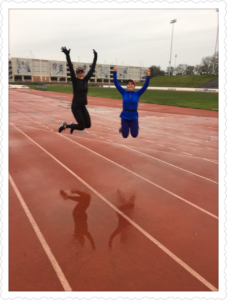
Some of my favorite track workouts are:
- 10x200m with 200m recovery in between.
- 8x400m with 200 or 400m recovery.
- 5x300m, 5x500m, 5x400m ladder, which is one of Desiree Linden’s favorite track workouts, according to Runner’s World Magazine.
- 4×600, 400, 200 starting at 5K and ending at 1-mile effort with 200m rest between the distances and 400m rest between the sets.
- 800m, 1,200m, 1,600m, 2,000m, 1,200, and 800m. with 400m recovery. The 800m are done at 5K pace and the rest are done at 10K pace.
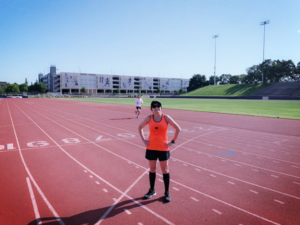
2. Fartleks
When I was a new runner and I first heard about Fartleks, I laughed out loud, as it was too close to another word that is not associated with speed at all, but something that we all do every day in private or public- ha!ha! However, from the first time I did Fartleks, I fell in love with the workout and the sheer exhilaration that they brought to my running. Doing Fartleks is my most favorite workout, because they bring out the inner child in me. Fartlek is a Swedish word meaning “speed play.” It is applied to a relatively unstructured form of training over natural terrain. It originated in Scandinavia where structured training during the snowy months of winter is difficult.
Super important note to all runners: Fartleks are best done for up to a month before starting intense Interval training on the track. They will increase your speed and endurance and will prepare the body for more intense and structured workouts.
Some of my favorite Fartlek workouts:
- Running 10×1 minute faster than 5K pace at about 90 to 95% full effort with 1 minute recovery in between.
- Running 8 to 10×2 mins with 1 min recovery in between at an effort of about 80 percent of full speed.
- Running 8×3 mins with 2 mins recovery in between.
- Running 4×5 mins with 3 mins recovery in between.
- My very favorite Fartlek workouts that my awesome coach Jenny Hitchings makes me do at the beginning of a training cycle: 5, 4, 3, 2, 1 minute with speeds varying from half marathon pace to faster than 5K pace, which is usually 6:30 for me. Recovery can be 2 minutes in between.
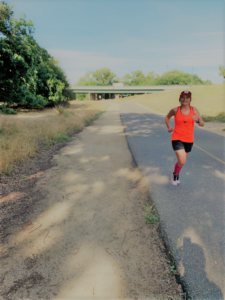
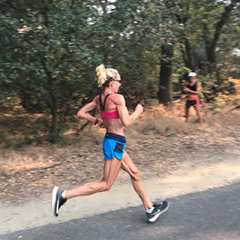
3. Tempo Runs
Tempo runs are the ideal workouts for any kind of distance, but they are especially beneficial to runners doing half marathons and marathons. Tempo runs are run at sub-maximal pace and done as anaerobic threshold workouts made popular by coach Jack Daniels, Ph.D. Tempo runs should be done at 20 to 30 seconds slower than 5K pace and for a minimum 15 minutes all the way to 60 minutes for advanced runners.
Types of Tempo Runs:
- Sustained Tempo done with no break or recovery for 3 miles to 9 miles, depending on the runner’s experience.
- Tempo repetitions can be done slightly faster, as they include recovery, which will help clear more lactate.
- Tempo Circuit, which I have only done once with coach Henry Hawkins, the head coach of Total Body Fitness Training – click on the link to see what a tempo circuit involves and why it gets us stronger and faster. The workout I have done included 400 meters followed by push-ups, lunges, squats and dips at different stations off the track. I ran one of my fastest intervals that day and it was so much fun.
4. Hill Repeats
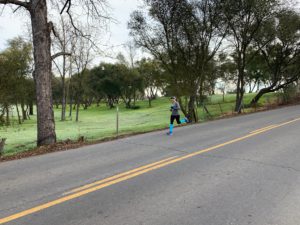
As we all know, hills not only make us stronger and faster runners, but they improve our running form. I love running hills to get stronger and to avoid injuries. I have a great running route through Ancil Hoffman Park that I like to do on my recovery days, as it has some hills and the trails keep me slower.
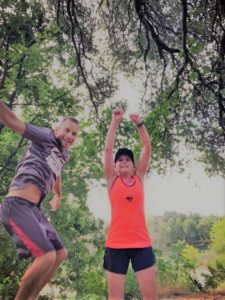
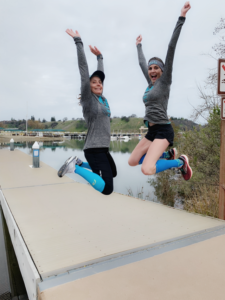
Some of my favorite Hill repeat workouts:
- Warm up for 2 to 3 miles and then do 6 to 8×30 seconds sprints uphill.
- 6×60 seconds sprints at the end of a 3-mile tempo run, which I am excited to do soon, curtesy of my coach who put it on the schedule for me.
- Long hill repeats, which are great at building aerobic and muscular endurance. They should be done at 10k, or faster pace depending on your goals.
- Long hill runs, which I do quite often, as I created up to 20 mile hilly route around my neighborhood.
- Downhill running, which increases quadriceps strength through eccentric contraction. Open your stride, lean forward, and don’t fight the gravity!
5. Progression Runs
I need to thank my good friend and Team Remo coach Robert Ressl-Moyer for turning me into the progression queen last year when I had my best marathon so far that I ran in 3:30:56 at Mountain 2 Beach. I used to run 10 to 18 miles progression runs, starting in the mid 9s and getting down to 7:40 pace, or faster. The purpose of progression runs is to teach us to run fast on tired legs and they can be done for 3 miles all the way to 20 for truly advanced runners, but ideally shorter so that you don’t burn out.
Another way to sneak in a short progression run is to run the last mile of a regular, shorter run at 5K pace.
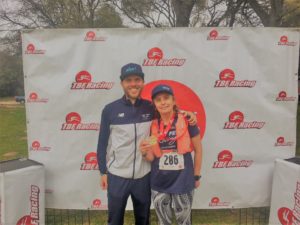
6. Strides
New runners should start with strides at the end of their easy runs before doing interval workouts. Strides should be done for about 20 to 30 seconds at about 90 percent running ability, but they can also be done at a lower intensity. According to a recent article I read on Runner’s World it is great to do strides the day before a tough track workout, which I did this week and I had a great speed session on Wednesday, so give it a try. Try to incorporate strides into your easy runs about twice a week and you will reap the benefits.
And when you have exhausted all these speed workouts, why don’t you take your long run on the trails, where the hills are ubiquitous and you will immerse yourselves into nature, soul bathing, or posing for a great picture on top of some rocks like my awesome friend and best training partner Andrea and I did just recently.
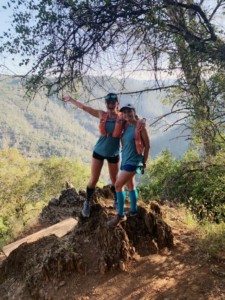
Now that summer is here, I have special incentives for buyers and sellers, such as money back towards closing costs and reduced commission when selling, so please mention this blog and you will also receive a free market analysis of your home, no strings attached.
To search free listings, please go to http://www.dynamicsacramentohomes.com.
For more info on running and real estate, whether buying or selling, please e-mail me at carmenmicsa@yahoo.com, or call me at 916-342-2446.
Running for real estate with joy! Happy feet!

